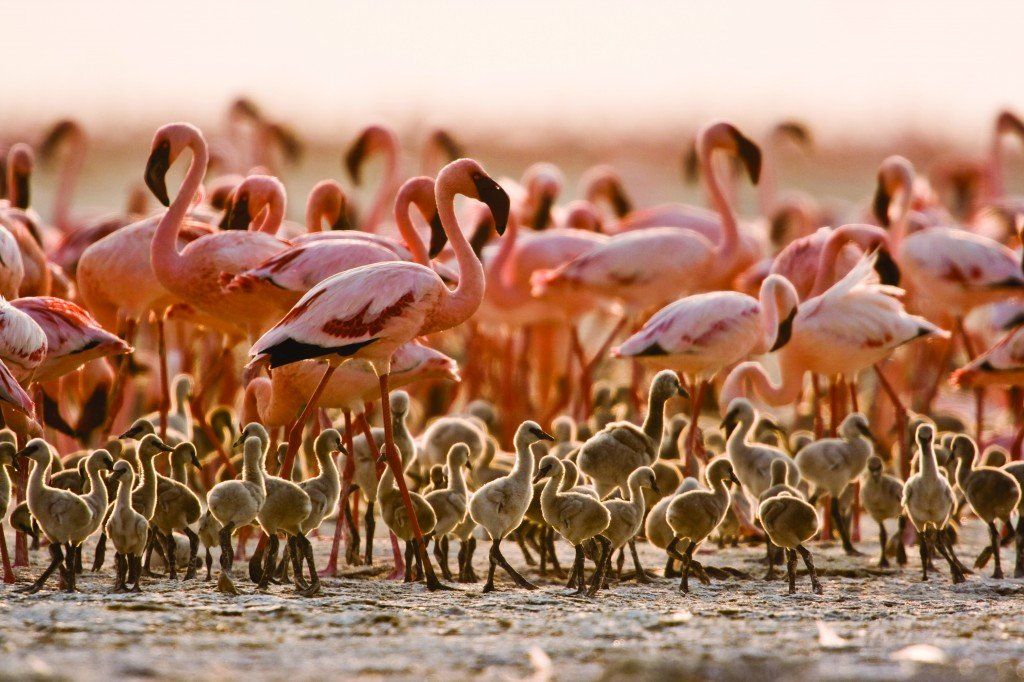The Making of "Crimson Wing - Mystery of the Flamingos"
Back in Mambo’s we bumped into a friend, Stefan Hoerchel, who showed us footage of the lake he’d taken from his microlight. Seasonal algae blooms turned the lake vivid shades of red and pink, settling in swirls and rosettes. The lake’s unique alchemy of water and weather also caused a giant salt island to form in the middle – the perfect crèche for Lesser flamingos. More than 80% of the world’s four-million are born there, but no one had ever filmed this extraordinary spectacle.
For four years Matt and I struggled to shape a story that reflected Natron’s mystical quality, and yet had a strong natural history element concerning the flamingos. In 2006, NatureDisney, a new player in the wildlife film world, decided to produce our film. We had a tiny budget and just over a year. Like acolytes, we committed ourselves to the lake and it opened up to us a mythic and epic beauty which filled the camera’s frame. The film was our love letter.
But so much didn’t make the final cut, or happened when the cameras weren’t on. Once, Matt and I were walking along the shore, and a wall of dust, perhaps a thousand feet high, moved up from the south, through the corridor between Lengai and its sister mountain, Gelai, bearing down toward the lake, toward us, like a computer-generated special effect. A strange stillness precluded the dust storm, the herds of zebra and wildebeest stopped moving, and the lake turned dark, opaque, sinister. Then the wind descended, a Biblical oppression, so that Matt and I flattened ourselves onto the sand. The dust was so dense we couldn’t see more than a few feet. Within minutes, it passed, a dervish, howling up the lake towards Kenya.

